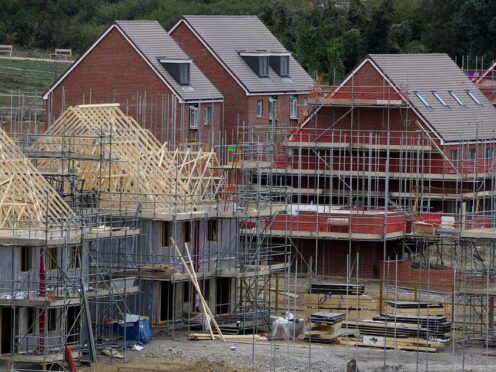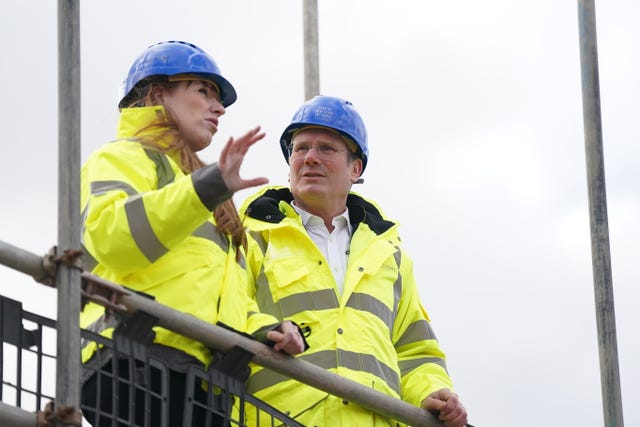
Labour is expected to set out five “golden rules” for building on the green belt in an effort to boost housebuilding while improving “genuine green spaces”.
The rules, to be laid out on Friday, include prioritising previously developed brownfield sites and areas of ugly or poor-quality land that the party has dubbed “grey belt”.
Labour has previously pledged to build 1.5 million homes over the course of the next Parliament, replicating the Conservatives’ 2019 promise to build 300,000 homes per year.
While the party has committed to a “brownfield-first approach”, its plans also include releasing some green belt land in areas without enough brownfield sites and where that land is of poor quality, such as in Tottenham where a development was blocked because a disused petrol station was designated as green belt.
Blaming the Conservatives for creating a “housing emergency” that is “engulfing a generation of hard-working aspirational people”, Sir Keir Starmer said his party would “get tough on the blockers”.
He said: “Labour supports brownfield-first policies. But we must be honest, we cannot build the homes Britain needs without also releasing some land currently classed as green belt.
“We’ll prioritise ugly, disused grey belt land, and set tough new conditions for releasing that land. Our golden rules will also ensure any grey belt development delivers affordable homes, new infrastructure and improved green spaces.”
As well as providing a “brownfield-first” approach and creating a “grey belt” category, Labour said it would require homes built on released land to provide at least 50% affordable housing and include plans to improve public services and local infrastructure.
The party will also rule out building on “genuine nature spots” and will require developers to include improvements to existing green spaces in their plans.
Deputy leader Angela Rayner said grey belt land “should not be off limits while local people are kept off the housing ladder”, adding that much of the green belt “isn’t green, rolling hills, but poor-quality scrubland, mothballed on the outskirts of town”.
She said: “Labour has a plan for smarter green belt release, underpinned by strong rules to tackle the housing emergency and build the homes we need.”

Housebuilders have welcomed Labour’s plans, with National Housing Federation chief executive Kate Henderson saying it is “right to consider how our approach to the green belt can better serve our country and our communities”.
She said: “We strongly support plans to use this ‘grey belt’ to tackle the housing crisis, and to deliver a minimum of 50% affordable homes.”
Richard Beresford, chief executive of the National Federation of Builders, said: “Prioritising grey belt and pairing it with golden rules would ensure green space loss is mitigated, vital supporting infrastructure is delivered and both builders and local people get planning and place-making certainty.
“It’s a win for all parties, which is why we support it.”
Housebuilding has risen since the last election, with 202,300 new homes started in 2022/23 compared to 187,870 in 2019/20, returning to levels last seen just before the financial crash.
But planning applications have fallen since the middle of 2022, with Labour blaming the planning system and the Government’s decision to scrap mandatory housing targets in the face of backbench pressure.
Natural England chairman Tony Juniper has also advocated limited building on the green belt, telling The Guardian last year an “oppositional mindset” does not reflect reality.
Conservative Party Chairman, Richard Holden MP said the announcement was a “desperate attempt to distract from the Angela Rayner scandal and Sir Keir Starmer’s failure to get a grip of the details”.
He added: “Labour’s policy is to ignore the concerns and voices of local people. It is the same approach they took to ULEZ and that is why they will fail.
“Only Rishi Sunak and the Conservatives will respect local communities building the right homes in the right places which has delivered one million homes over this Parliament and sticking to the plan to reduce inflation and get mortgage rates down to help first-time buyers.”

Enjoy the convenience of having The Sunday Post delivered as a digital ePaper straight to your smartphone, tablet or computer.
Subscribe for only £5.49 a month and enjoy all the benefits of the printed paper as a digital replica.
Subscribe